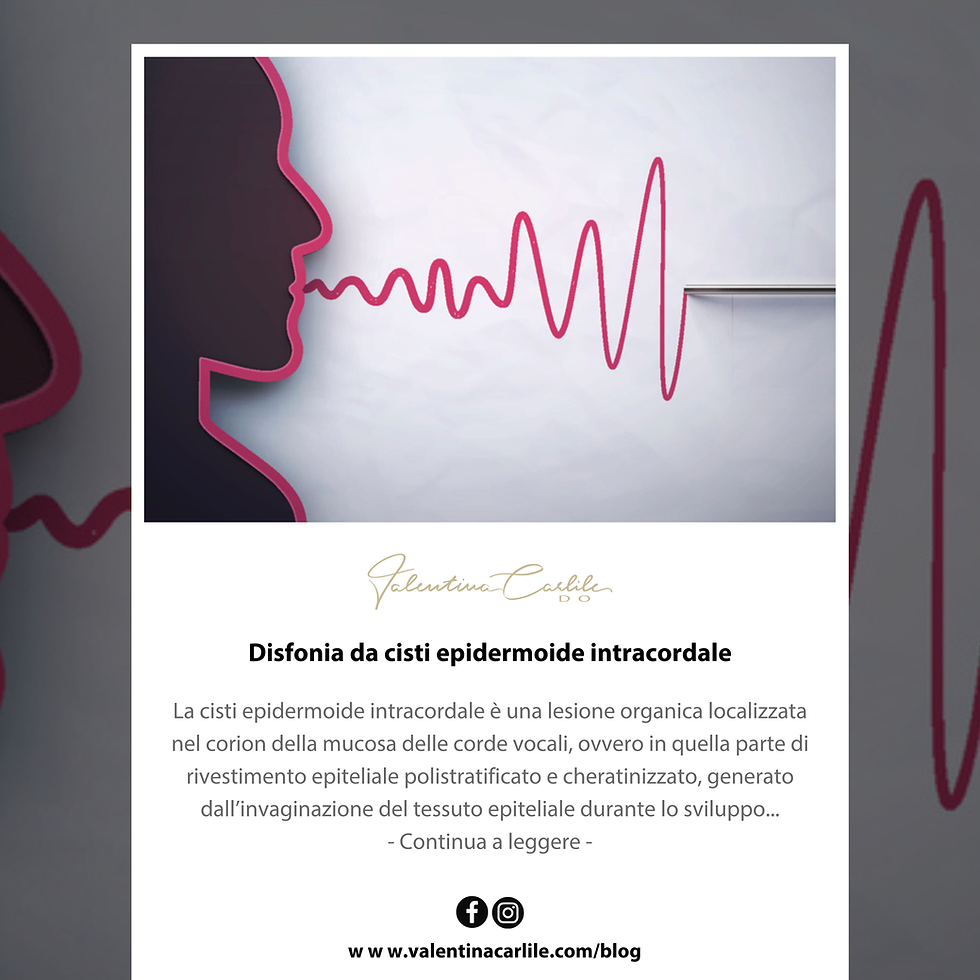Voice and Singing Osteopathy - Parathyroid adenoma surgery, dysphonia, chordal paralysis, vocal asthenia
- Valentina Carlile DO

- Oct 9, 2015
- 2 min read

A. came to my office following a referral from his doctor for a problem of dysphonia and vocal asthenia that arose following surgery for a lower left parathyroid adenoma. As can be seen from the literature and daily case studies, stimulating the laryngeal nerve during surgery to check its status has significantly reduced the incidence of vocal disorders in patients who have undergone the surgery itself. However, there are still several cases in which the patient has a post-surgical outcome of dysphonia which, however, if related to the large opening and laxity to which the structures are subjected during the surgical procedure, recedes in the first 2-6 months. However, there are non-physiological cases in which it is still possible that the nerve is damaged and the outcome is chordal paresis. This is the case of A. If the question you are asking yourself is 'But can we talk about chordal palsy?' the answer is yes. The sound is no longer like the one originally produced, it is asthenic, blown due to incomplete or failure to close the vocal lips during phonation but it comes out. Returning to A., what was offered to him after the operation were speech therapy sessions which A. carried out 'also doing his homework' with great abundance. Sessions in which he was re-taught to breathe correctly, to make sounds and to manage sounds and breath through exercises such as counting up to and over one hundred, the trill, the humming, the double knot. A. has had significant improvements, he is well aware of the fact that his voice will never be able to go back to how it was before but he is looking for an improvement in the quality of life. He would like to at least be able to make himself heard again when he speaks and not be so tired from speaking. When he came to me we discussed this issue in depth because I wanted him to be clear that 'miracles don't happen'. The last phoniatric examination he underwent diagnosed chordal paralysis as certain and lipofilling of the chord was suggested to improve the closure of the lips. I explained to him clearly what my role would be, that is, to evaluate whether from an osteopathic point of view there were any dysfunctions and resolve them in order to make him 'work' in the most correct way possible despite the paralysis. We began evaluation and treatments. Today A. speaks with less vocal fatigue and his tone of voice is 'audible' without effort and lasts in such conditions for longer than when he first appeared. A. also manages his breathing and speech in general much better. My future role will be to accompany him at the time of the operation so that the work is as least invasive as possible. The intervention will be followed by subsequent monitoring and possibly new work together with the phoniatrician.





Comments